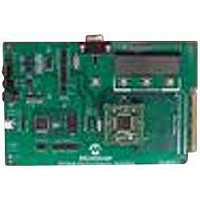MCP3909EV-MCU16 Microchip Technology, MCP3909EV-MCU16 Datasheet - Page 92

MCP3909EV-MCU16
Manufacturer Part Number
MCP3909EV-MCU16
Description
EVALUATION BOARD FOR MCP3909
Manufacturer
Microchip Technology
Datasheets
1.MCP3909T-ISS.pdf
(44 pages)
2.MCP3909T-ISS.pdf
(104 pages)
3.MCP3909EV-MCU16.pdf
(38 pages)
Specifications of MCP3909EV-MCU16
Number Of Adc's
2
Number Of Bits
16
Sampling Rate (per Second)
15k
Data Interface
Serial
Inputs Per Adc
1 Differential
Input Range
±1 V
Voltage Supply Source
Analog and Digital
Operating Temperature
-40°C ~ 85°C
Utilized Ic / Part
MCP3909
Silicon Manufacturer
Microchip
Application Sub Type
ADC
Kit Application Type
Data Converter
Silicon Core Number
MCP3909
Kit Contents
Board
Lead Free Status / RoHS Status
Lead free / RoHS Compliant
MCP3909 / dsPIC33F 3-Phase Energy Meter Reference Design
C.10 Active Energy AND REACTIVE ENERGY
C.11 POSITIVE/NEGATIVE ACTIVE ENERGY, POSITIVE/NEGATIVE REACTIVE
DS51723A-page 92
ENERGY AND FOUR-QUADRANT REACTIVE ENERGY
Active energy is defined as the integral of active power over time, which is:
EQUATION C-58:
In this design, active energy is obtained from multiplying the voltage by the current
sampled each time. The phase angle difference is compensated after each power
measurement is completed.
For reactive power, the cumulative reactive energy over a time period can be calculated
by measuring the average power and calculating the time interval between 2 measure-
ments.
EQUATION C-59:
In the measurement plane, the horizontal axis denotes voltage vector U (fixed on the
horizontal axis). The instantaneous current vector is used to represent the power
transfer, and has a phase angle φ against vector U. φ is positive in counter-clockwise
direction. Power exchange can be defined in 4 scenarios:
• Quadrant I (P>0, Q>0): active energy and reactive energy are sent out at the
• Quadrant II (P<0, Q>0): active energy is sent in while reactive energy is sent out;
• Quadrant III (P<0, Q<0): active energy is sent in while reactive energy is
• Quadrant IV (P>0, Q<0): active energy is sent out while the reactive energy is
1. Positive active energy and negative active energy: accumulated active
2. Positive reactive energy and negative reactive energy: If reactive power
same time;
absorbed;
absorbed.
energy can be defined as positive and negative depending on the direction of
active current. When the direction of active current is positive (from power grid to
loads), active energy is positive (where active power P>0, corresponding to
quadrants I and IV, which means that loads are drawing energy from grid). When
current moves from loads to power grid, it is defined as negative active energy
(where active power P < 0, corresponding to quadrants II and III, which means
energy is provided to grid). Usually only positive active energy is taken into
account in active energy, but in practice negative active energy may be taken into
account as well, if necessary.
Q > 0 (corresponding to quadrants I and II), it means power grid is providing
reactive energy to loads, so the energy is defined as positive reactive energy.
When reactive power Q < 0 (corresponding to quadrants III and IV), it means
that loads are providing reactive energy to power grid, so the energy is defined
as negative reactive energy.
W
=
∫
T
0
P t ( ) t d
V
r
=
=
∫
T
0
k
∑
Q
N
=
t ( )dt
0
u k ( ) i k ( )
⋅
⋅
Δ
t
© 2009 Microchip Technology Inc.











